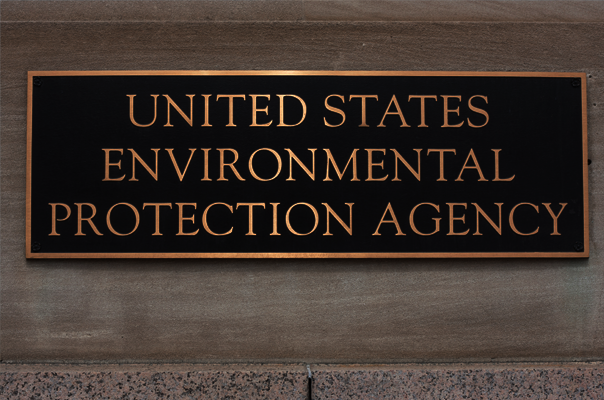Death and Toxins: How Krugman Botched His Mercury Commentary
Critics of NYT columnist and blogger Paul Krugman know that the economist—who won his Nobel award for work on international trade—has a habit of carelessly repeating the “facts” on environmental issues put out by his liberal colleagues. Yet Krugman’s blog post on the EPA’s decision to regulate mercury emissions from power plants was so factually mistaken and incredibly misleading that it was surprising even by his standards. In this post I’ll clarify the depth of the chasm between Krugman’s comments and reality.
Krugman on Mercury Regulation
Here is how Krugman used his extraordinary megaphone at the NYT blog to deal with the EPA’s decision. Krugman first quotes two paragraphs from Grist writer David Roberts, then returns to his own (Krugman’s) commentary:
David Roberts reports on the EPA’s decision, finally, to regulate mercury from coal plants:
Anyone who pays attention to green news will have spent the last two years hearing a torrent of stories about EPA rules and the political fights over them. It can get tedious. After a certain point even my eyes glaze over, and I’m paid to follow this stuff.
But this one is a Big Deal. It’s worth lifting our heads out of the news cycle and taking a moment to appreciate that history is being made. Finally controlling mercury and toxics will be an advance on par with getting lead out of gasoline. It will save…tens of thousands of lives every year and prevent birth defects, learning disabilities, and respiratory diseases. It will make America a more decent, just, and humane place to live.
[Back to Krugman writing:] Let me repeat part of that: it will save tens of thousands of lives every year and prevent birth defects, learning disabilities, and respiratory diseases. This is actually a much bigger issue, when it comes to saving American lives, than terrorism.
As Roberts explains, we’ve known about these costs of mercury pollution for decades, yet it took until now to get something done. The reason is, of course, obvious: special interests, hiding behind claims of immense economic damage if anything was done, were able to block action. [Emphasis in original.]
This is Krugman’s preferred M.O. when it comes to environmental issues: Copy-and-paste wild numerical claims, no matter how implausible on their face, and then pretend that all of the scientists agree with Krugman, while anyone who objects is either a fool or a paid shill of big business.
In this case, the numbers were so absurd that I decided to spend a few hours digging into the matter more deeply. Even those who are familiar with the progressive Left’s willingness to bend numbers to support their ideological causes may be surprised at what I uncovered.
The Origins of a Bogus Statistic: The Liberal Blogosphere Telephone Game
Most readers are probably familiar with the “telephone game,” in which one person whispers a statement to a second person, who whispers it to a third, and so on. With a big enough group, by the time the “statement” reaches the last person, it has morphed into something only faintly resembling the original utterance.
Something analogous partially explains what happened with Krugman’s over-the-top analysis. Glancing up again at the Krugman quotation, notice that the good doctor—in a post titled, “The Meaning of Mercury”—cited the claim that the EPA’s decision will “save tens of thousands of lives every year,” and then Krugman wrote, “[W]e’ve known about these costs of mercury pollution for decades.”
Because of Krugman’s title and discussion, the innocent reader would be led to believe that “the science” had shown that mercury pollution itself was responsible for at least 20,000 deaths annually, in the same way that (say) car crashes are responsible for a large number of deaths every year.
This is why my alarm bells went off. After all, in 2007 (the latest year of finalized data) the U.S. only had 2.4 million deaths total, with much of this number due to causes clearly unrelated to mercury. (For example, more than 123,000 died from accidents, some 35,000 were suicides, and 18,000 were homicides.) Was Krugman really telling us with a straight face that he thought at least 20,000—the lowest number that would render “tens of thousands” an accurate description—deaths were due to mercury emissions from coal-fired power plants?
We can see how Krugman’s version of reality starts to unravel, just by looking more closely at the very quote Krugman himself selected from David Roberts, who had written: “Finally controlling mercury and toxics will be an advance on par with getting lead out of gasoline” (italics added). Krugman, whether intentionally or through ignorance, led his readers to believe that this was a discussion about mercury, when, as we will see, the (bogus) statistic isn’t based on mercury emissions at all.
“Saving Lives” versus “Preventing Premature Deaths”
If we follow Krugman’s link to David Roberts’ piece, we don’t see any specific explanation of the “tens of thousands of lives” claim. However, in that piece Roberts’ links to this guest post at ClimateProgress (Joe Romm’s blog), by Daniel J. Weiss and Jackie Weidman. It is here that we start learning where the “tens of thousands of lives” number comes from, because the authors write, “These rules will remove millions of pounds of mercury, lead, arsenic and other dangerous pollutants from coal plants, preventing 17,000 premature deaths annually.”
Notice that the telephone game has struck again. Weiss and Weidman say the rules will prevent “17,000 premature deaths annually.” David Roberts incorrectly translated that into a claim that the rules will “save tens of thousands of lives.”[1] Besides being wrong numerically, it’s also misleading, since preventing a “premature death” doesn’t have quite the same ring as “saving lives.”
If a new air traffic control system reduces airplane crashes, so that fewer people die from “airplane crash” every year, then it is clearly saving lives, and the evidence for the efficacy of the new system is quite objectively verifiable. But if instead someone claims that a new pill will reduce “premature deaths” by a certain number each year, that is a much more abstract claim, dependent on a theoretical model. The new pill might in fact be a wonderful boon to public health, but the researchers in question have a lot more leeway to come up with a wildly wrong number when they can play with “preventing premature deaths.”
Reporting the Top of the Range Instead of the Range
Alas, even the “prevent 17,000 premature deaths” claim has fallen victim to the telephone game. If we follow the link that Weiss and Weidman provide, we are led to the EPA analysis fueling much of the progressive blogosphere’s commentary on the issue. Here we see, at long last, the origin of the factoid. On page 3 the report explains, “In 2016, these proposed rules would avoid: 6,800 – 17,000 premature deaths.” Thus, when Weiss and Weidman confidently asserted that the rules would “prevent…17,000 deaths annually,” they were reporting the very highest number in a range given by the EPA. (Note also that the low end of the range wouldn’t even constitute ten thousand, let alone “tens of thousands.”)
Bait and Switch: None of This Is About “Air Toxics” After All
We have already seen the telephone game’s ability to distort and inflate, resulting in Paul Krugman’s absurd implication that the scientific consensus has known for decades that mercury emissions from power plants currently cause at least 20,000 deaths annually, and that anyone who disagrees must be stupid or corrupt.
However, a reasonable person might respond, “Okay Murphy sure, the figures weren’t just about mercury, but ‘mercury and other air toxics.’ It’s also true Murphy that the actual number might be as low as 6,800 premature deaths avoided, rather than ‘tens of thousands of lives saved.’ But still, Krugman and his allies are only guilty of inflating the numbers and botching the summary of the facts. The basic spirit of their analysis is still sound, right?”
Unfortunately, what is happening here is far more Orwellian than a mere telephone game. The EPA’s analysis is based on a gigantic bait-and-switch, as Dr. Anne E. Smith explained in her August, 2011 technical commentary on the EPA’s proposed rule. From Smith’s summary of her findings:
EPA reports that the Proposed Rule will produce annual benefits of 6,800 to 17,000 avoided premature deaths and other types of health effects reductions, with an estimated value ranging from $53 billion to $140 billion, but these benefits have nothing to do with air toxics at all. The fact that none of these benefits are due to air toxics reductions is quite clear if one reads the Executive Summary (Chapter 1) of the RIA. [Emphasis in original.]
Indeed, if one knows what to look for, this shocking revelation is implicit in the EPA’s own fact sheet (which the ClimateProgress writers Weiss and Weidman linked to). On the very same page that provides the “6,800 – 17,000 premature deaths” bullet point, the EPA document says:
The updated standards will provide certainty and level the playing field so that all power plants will have to limit their toxic emissions – ultimately preventing 91 percent of the mercury in burned coal from being emitted into the air. The rule provides up to 4 years for facilities to meet the standards.
EPA did not estimate the benefits associated with reducing exposure to air toxics or other air pollutants, ecosystem effects, or visibility impairment. However, the proposed toxics rule would cut emissions of pollutants that are of particular concern for children. Mercury and lead can adversely affect developing brains – including effects on IQ, learning, and memory.
In addition to the benefits of reducing exposure to air toxics, these standards would reduce concentrations of fine particles (PM2.5) in our air. This will significantly improve public health by preventing hundreds of thousands of illnesses and thousands of premature deaths each year. [Emphasis added.]
Thus we see that the figures (both for premature deaths and economic benefits) cited by the progressive bloggers refernot to emissions of mercury by itself or even of mercury plus all other “air toxics” combined, but rather to a certain type of fine “particulate matter,” denoted PM2.5. In other words, EPA proposed a rule to limit mercury and other “air toxics” emissions and then, to justify the rule, almost completely relied on a model of the costs and benefits of reducing PM2.5emissions, which would be an incidental byproduct of the rule. Thus, even if we accept the EPA’s analysis as gospel truth,the numbers of “lives saved” cited by Krugman have virtually nothing to do with mercury at all.
But wait, it gets worse. As Dr. Smith explains later (pp. 6-7) in her analysis, the modeling assumptions behind these PM2.5 numbers are themselves quite dubious:
[R]eaders unfamiliar with the literature on PM2.5 health risks should be aware that the estimates of PM2.5-attributed deaths (such as the 6,800 to 17,000 that EPA is attributing to the Proposed Rule) are based entirely on statistical associations between total mortality rates in various locations of the US and their respective monitored, region-wide ambient PM2.5 concentrations….EPA’s estimate of 6,800 to 17,000 PM2.5-related premature deaths avoided in 2016 as a result of the Proposed Rule is based on an assumption that 130,000 to 320,000 deaths, respectively, of 2005’s US deaths were hastened by breathing ambient PM2.5….And yet, EPA identifies not a single death during 2005 that was attributed, even in part, to exposure to ambient PM2.5. If PM2.5 is indeed having this estimated effect on the public health, there is no evidence indicating when or where these events occurred, or who was affected. Rather, these mortality estimates are merely inferences drawn after making a host of assumptions about how to convert a statistical association into a concentration-response function. No one really even knows what types of deaths might be implicated. A common belief among researchers is that the deaths are primarily cardiovascular in nature, but this is far from an established fact: everything from cardiovascular causes to diabetes to lung cancer has been mentioned as having such an association in one paper or another. There is no clinical evidence to inform these inferences either, despite at least 15 years of efforts by researchers to find a clear physiological mechanism to explain and lend credibility to these estimates based solely on statistical correlations.
Conclusion
The deeper one digs into the actual science backing up the wild claims of Krugman & Co. on mercury regulation, the weaker their rhetoric becomes. The implausible assertions in Krugman’s blog post were generated by a comedy of transgressions, ranging from (perhaps honest) poor paraphrasing, to reporting the top number of a wide range, to justifying regulations on air toxics emissions based on dubious models of the health effects of particulate matter.
In conclusion, let me be clear: No one is claiming that little kids should play with mercury. (In fact, will Krugman, David Roberts, et al. join IER in opposing the government’s phased-in ban on incandescent bulbs that will effectively force all schools and daycare centers—not to mention homes—to use mercury-filled CFLs? These guys keep telling us how dangerous mercury is, after all.) Yet the public should get mighty suspicious when the allegedly airtight evidence on the benefits of mercury regulation turns out to be so very fragile indeed.
[1] Maybe Roberts is adding EPA’s claim of avoiding 17,000 premature deaths to other numbers, but if so, he fails to note his source.




